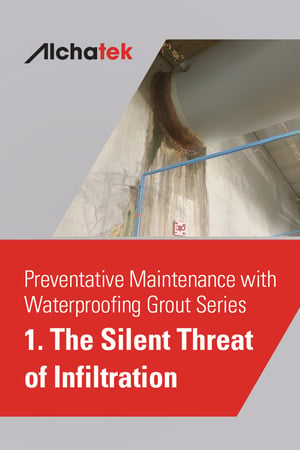
 In the realm of property management and building maintenance, certain risks lurk unseen, often underestimated in their potential for destruction. Among these, water infiltration stands as a silent, insidious threat. Its capacity for causing extensive, sometimes catastrophic damage is not to be overlooked.
In the realm of property management and building maintenance, certain risks lurk unseen, often underestimated in their potential for destruction. Among these, water infiltration stands as a silent, insidious threat. Its capacity for causing extensive, sometimes catastrophic damage is not to be overlooked.
The Unseen Enemy: How Water Infiltration Works Against Structures
Water infiltration might not grab headlines like a fire or an earthquake, but its effects can be just as devastating over time. It usually starts small - a tiny crack here, a small leak there. Unnoticed or ignored, these minor issues can evolve into significant structural problems. Water seeps into the foundations, walls, and other critical parts of a building, gradually eroding the integrity of the structure. This process is slow, often going undetected until it's too late.
Real-World Consequences: The Champlain Towers South Collapse
A stark reminder of the catastrophic consequences of ignoring water damage is the tragic Champlain Towers South collapse in Surfside, Florida. While the final investigation report is yet to be fully conclusive, early findings pointed to long-term water damage as a significant contributing factor. This tragedy underscores the necessity of regular inspections and maintenance to detect and address water infiltration issues before they escalate into dire consequences.
Real-World Consequences: The Ann Street Parking Garage Collapse in Manhattan
Adding to the list of cautionary tales is the recent collapse of a parking garage building in the Financial District of Manhattan, New York City. On April 18, 2023, the second floor of the Ann Street Parking Garage partially collapsed onto the first floor, tragically claiming one life and injuring others. The garage, with a history of building violations dating back decades, including concrete defects and cracks, highlights the grim repercussions of neglecting maintenance and ignoring signs of structural weakness. This incident, leading to evacuations and a city-wide mandate for parking garage examinations, is yet another powerful example of the destructive potential of water infiltration and structural neglect.
Silent Yet Destructive: The Underlying Impact of Water Damage
Water damage isn't just about the immediate effects of a leak. Its impact is multifaceted, affecting everything from the building's structural integrity to the health of its occupants. Continuous water exposure can lead to the corrosion of steel reinforcements, the deterioration of concrete, and the growth of mold and mildew. These issues not only compromise the safety of the structure but also pose health risks, particularly in the form of respiratory problems caused by mold spores.
Why Prevention is Key
The most effective strategy against water infiltration is prevention. Regular maintenance and early detection are vital in mitigating the risks associated with water damage. Property owners and managers should prioritize regular inspections, looking out for signs of water damage like discoloration, mold growth, or pooling water. Early intervention can save not only significant repair costs but also lives.
Heeding the Silent Warning
The lesson here is clear: water infiltration, while silent and often unnoticed, is a formidable enemy against the longevity and safety of our structures. By understanding the potential dangers and committing to regular preventative maintenance, we can protect our buildings and, more importantly, the lives within them.



